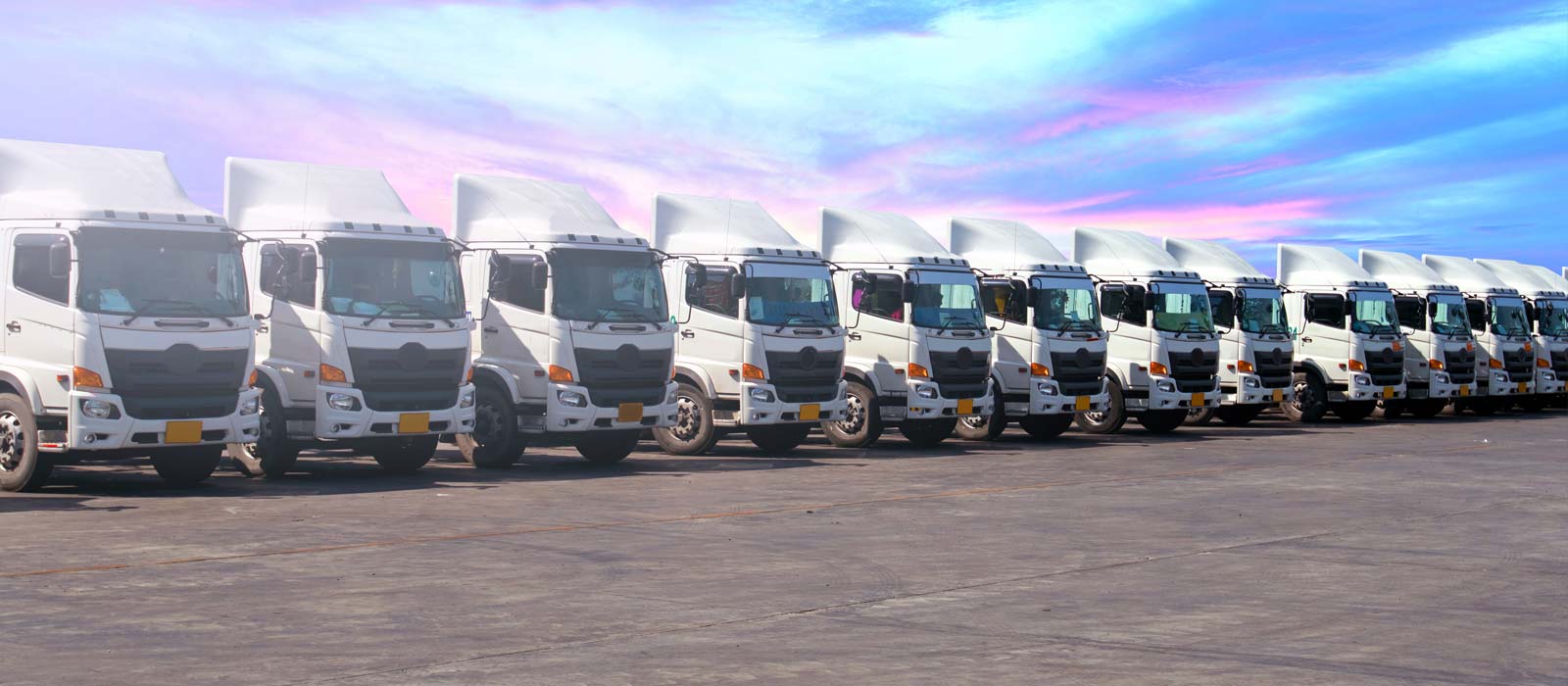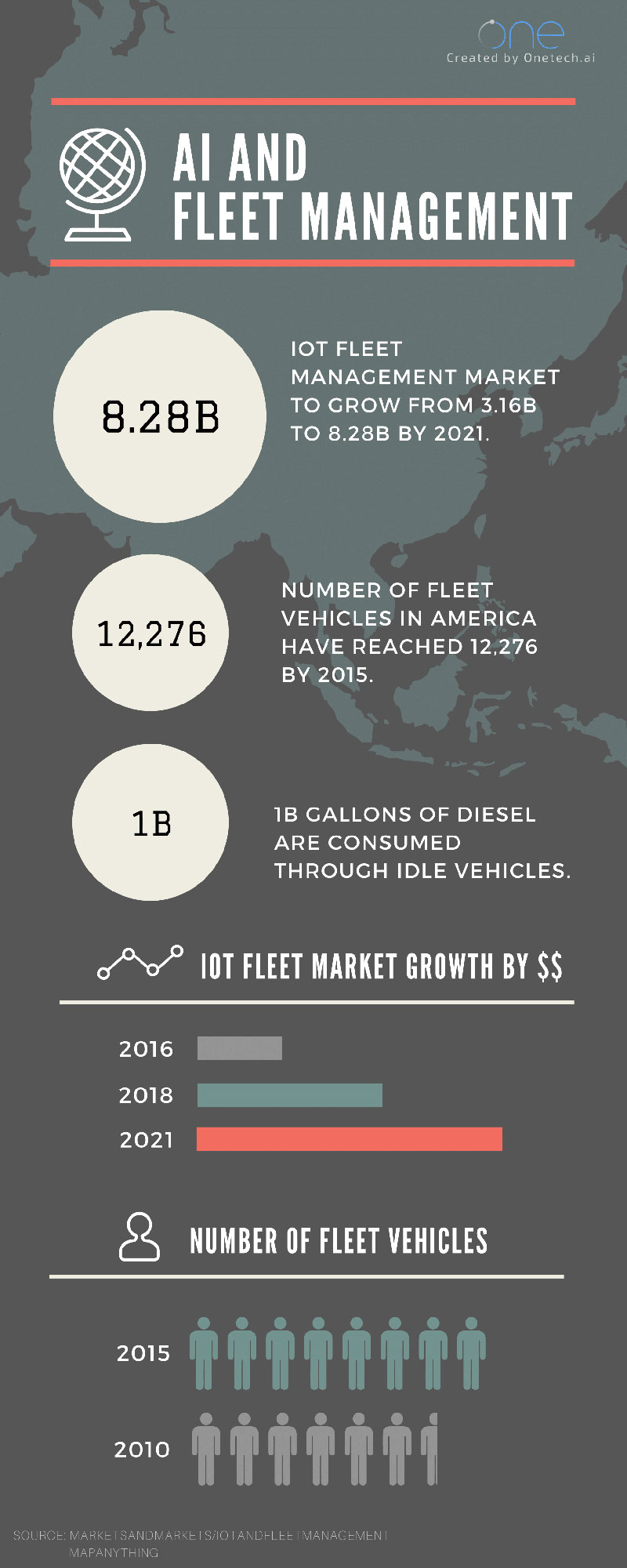
10 May How Is AI Integrated With Fleet Management? – Top 5 Methods
The path carved by recent impacts in AI-development has made way for unprecedented growth in the fleet industry. Enterprises are aware of the multitude of pain-points associated with overseeing thousands of vehicles and drivers. Challenges range from small to disruptive on a macro-level. Some of these disruptions require unique solutions that aren’t available in standard handbooks.
These challenges include having outdated software, unused or unauthorized usages of assets, unpredictable fuel costs, and a need to effectively manage nationally-dispersed vehicles. Smaller challenges can include having an excess of information, slow communication between drivers and enterprises, and a lack of compliance to regulations. The advent of AI-integrated fleet systems solves many of these problems and more.
In no particular order, here is our list for the top 5 ways AI and fleet management works in tandem to bring about a safer and more productive future for fleet management:
1. Cloud-based Platforming
The development of cloud-based platforms is allowing artificial intelligence to take center-stage in fleet management. Applications of this include the ability for drivers to locate gas stations, restaurants, assets, and other essentials. The automation capabilities of AI are better realized when features of these examples include the ability to pre-order, pre-pay, and pre-determine food, gas, and location, respectively. This list is not exhaustive and as AI platforms develop, better features will be added to augment our fleets.
2. AI Connectivity
Sweeping integration of IoT technology will allow for drivers, devices, vehicles, and assets to work together by cross-sharing valuable data. What this means for drivers is faster and more effective user-experience with smart apps. Whether it is to send/receive information, e-search, or manage fleets, all functionalities of devices will be improved and expanded upon. Furthermore, AI connectivity dictates that voice command integration to smart devices will soon be the adopted norm.
3. Connected Cars
The reality of connected vehicles capable of avoiding traffic/weather conditions, relaying information to other vehicles, and accident prevention, is on the horizon. The automation of these smart vehicles will allow for better executive usage of time and resources. Fleet managers will now be kept in the loop of vehicle tasking, routing, and other general tracking applications. The massive amounts of data generated by geographically-dispersed vehicles will be stored and processed by AI-integrated technology. The results paint a bright picture for the future of fleet safety and productivity.
4. Driver Safety
Road-side fleet accidents and fatalities are a serious concern. Fleet drivers dedicate a substantial number of hours to being on the road and the accompanying risks has not decreased over the years. Driver fatigue can result up to a quarter of serious accidents. More modern vehicles are implementing AI-integrated response systems. These systems monitor driving behavior and detects erratic vehicle movements and lane deviation.
Future AI applications include features that analyses driving habits so that smart cars can make corrective adjustments to improve road safety. Working with connected cars, a situation can occur where if a vehicle abruptly brakes, then subsequent vehicles from behind receives that data to brake simultaneously. With the potential of all these applications not fully realized, artificial intelligence will be an ongoing presence in the refining and broadening of driver safety.
5. AI-Operated Vehicles
Not only is Elon Musk well-known for his autonomous vehicles, but the Tesla CEO even hinted at the smart car’s capability of predicting where you would want to go. In response to a twitter question about whether the car could ask the owner where to go, Musk stated “It won’t even need to ask you most of the time.”
Having self-driven vehicles a reality, with a predicted amount of 10 million road-ready by 2020, AI and fleet integration will be continuously evolving. A future where vehicles come equipped with automatic braking, collision predicting, and pedestrian tracking will surely alleviate safety concerns for the fleet industry.
To learn more about the digital transformation or AI.

